Discover Bhanwar Pahar in Simdega, Jharkhand – a hidden gem of natural beauty, tribal culture, religious significance, honeybee legends, caves, trekking adventures, biodiversity, and future tourism potential.
Introduction Brief introduction of Bhanwar Pahar
Jharkhand is known for its natural beauty, dense forests and tribal culture. Like tourist places like Ranchi, Netarhat, Patratu valley, Bhanwar Pahar of Simdega district is also a hidden gem. The natural beauty, religious importance and adventure activities here make it a unique destination.
Bhanwar Pahar is a natural tourist place adjacent to Bhanwar village in Kolebira block of Simdega district of Jharkhand state. Black bees are mainly found in large population on this mountain. It is said that in ancient times, these bees were used to drive away enemies during war.
Many tunnels have been seen on this mountain. Where the temperature remains normal in any season. There is no effect of any weather in the tunnels. Big rocks are seen in Bhanwar Pahar. To come here, one can easily come by using road transport.
Village, pond, Jagannath temple, waterfall etc. can be seen below the hill. Many small streams can be seen in the form of rivers. The height of this Bhanwar Pahar can be more than 350 feet. The length of this mountain is several kilometers. The view from the top of the hill here looks very beautiful.
The greenery and forests can be seen as far as the eye can see in the natural beauty. Local tourists come here to celebrate picnics on the hillside in the month of January.
Geographical Location
Bhanwar Pahad is located at a distance of about 30 km from Simdega district headquarters. It is about 10-12 km from Simdega city and about 150 km from Ranchi. Dense forests and rocky hills are found around here, which attract nature lovers and trekkers. Bhanwar Pahad is a major tourist attraction in Kolebira block. It is called ‘Bhanwar Pahad’ because it houses a large population of black bees.
Old History of Bhanwar Pahad
The history of Bhanwar Pahad in Simdega is associated with a legend of black bees, which were used as soldiers by warriors in ancient times to fight enemies and protect themselves.
The place is in Kolebira block and is also known for its natural beauty, unique ponds, and Gulachi flowers, which make it an important tourist destination. The hill is named after the large number of black bees (locally called Bhanwar) found here.
According to legends, in ancient times local warriors used these bees to attack enemies and protect themselves, which increases the historical importance of the hill.
Many types of herbs are found on Bhanwar Pahar, which increases its medicinal importance. Today Bhanwar mountain is a major tourist attraction of Kolebira block, which attracts people from far and wide for its natural beauty.
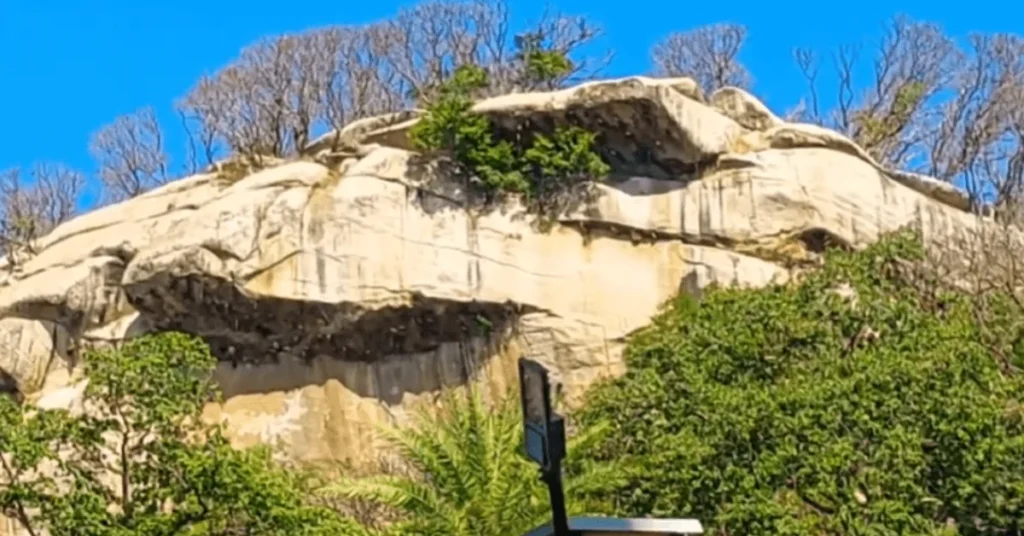
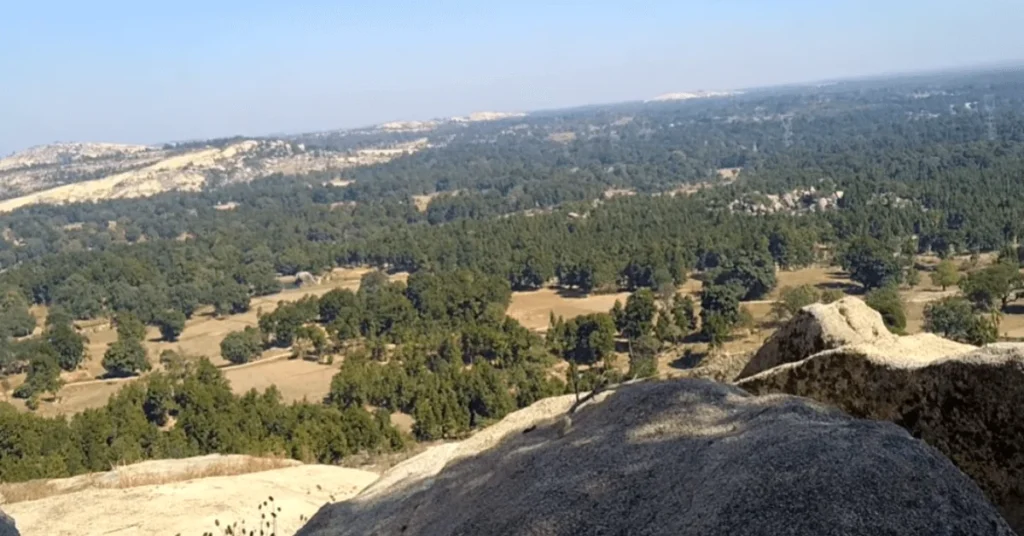
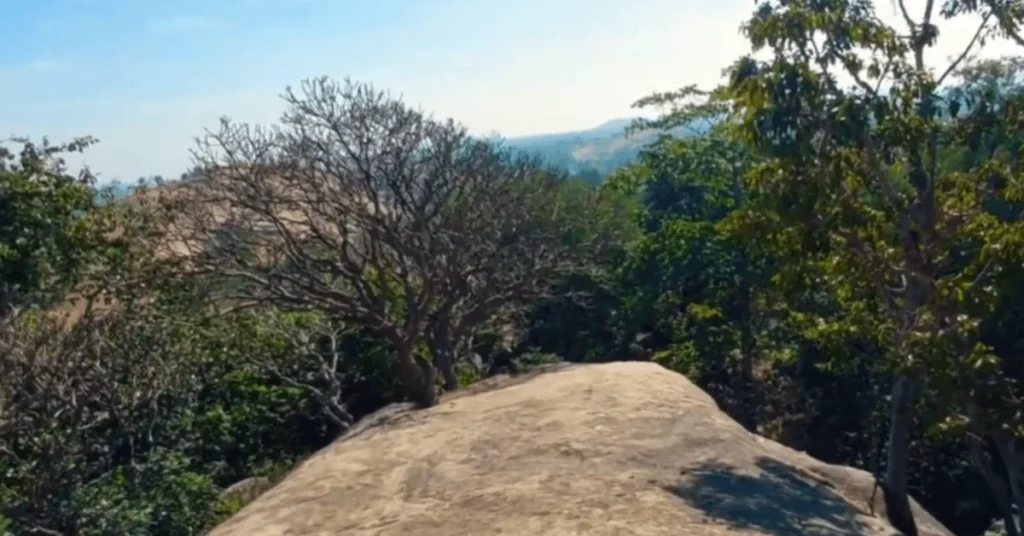

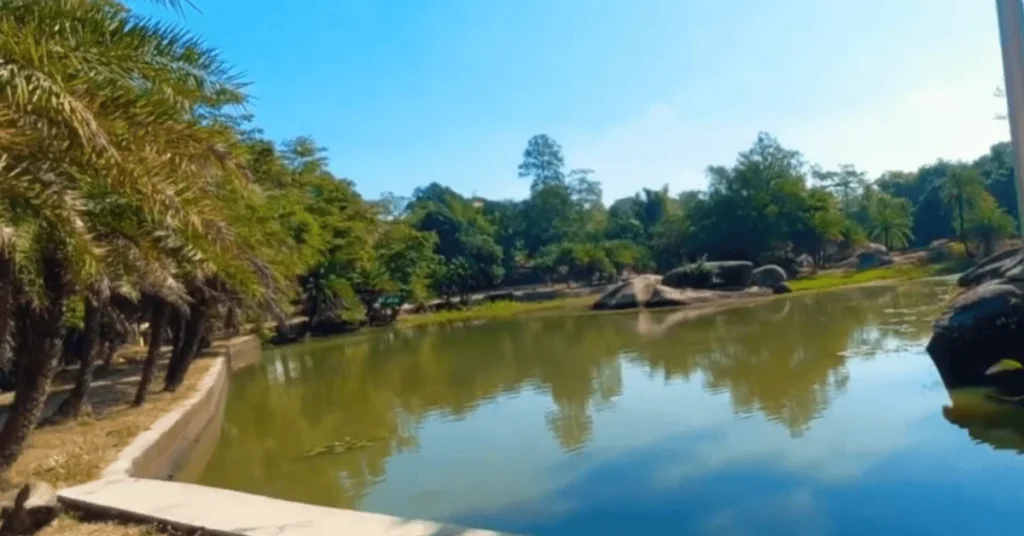
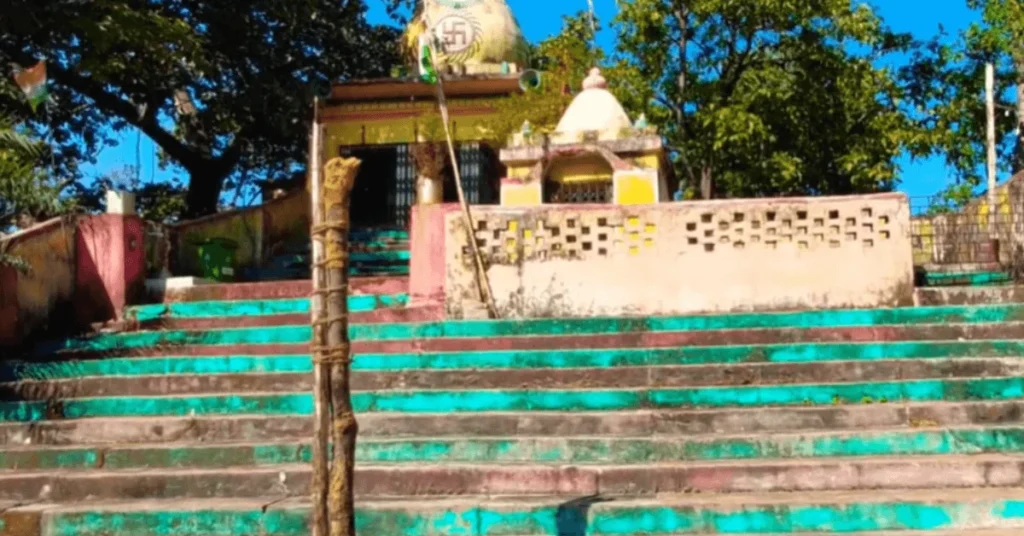
Religious Importance
Bhanwar Pahad is considered to be the center of faith of the local tribal community. The local people here give importance to this mountain for worship and rituals. There is a temple of Lord Jagannath below the hill. Every year Lord Jagannath’s Rath Yatra is organized here.
Where thousands of local people participate. A grand fair is organized on this occasion. In which people from local and nearby cities come to see the Lord. At that time the maximum crowd is seen on Bhanwar Pahad. Very few tourists come here on normal days. Crowds of tourists can be seen during festivals and local fairs.
Mythology and folklore
The name ‘Bhanwar’ is probably related to a species of bee called ‘Bhanwar or Sarang’ (Apis dorsata), which is also called ‘hill bee’ in local areas. This bee is mainly found throughout India and can be found up to an altitude of about 1200 meters.
These bees make their hives on big trees and old buildings. Their nature is very fierce and their sting is also sharp, which makes it difficult to follow them. These bees produce up to 30-40 kg of honey in a year.
A similar kind of bee, like ‘Bhanwar’, makes only one hive in the open, but its hive is small and can be seen hanging on branches, which is not at a great height. The length and width of this hive is about 20 centimeters.
The myth prevalent among the local people associated with Bhanwar Pahar shows the recognition of religious and cultural point of view as important. It is said that the Munda, Oraon and Ho tribes consider this mountain sacred. They believe that this mountain is the abode of Mother Earth and the Gods.
Natural beauty
The view around Bhanwar Pahar and the surrounding area is quite beautiful. The view here from July to February remains quite natural. The view around is good as there are lush green trees, plants, waterfalls, rivers, streams, ponds, local temples and other tourist places. One does not feel physically tired.
Trekking and Adventure Tourism
No stairs have been built to climb Bhanwar Pahar. There is a path through Bhanwar village which leads to the top of the hill. Climbing here is a bit difficult. This hill can be considered as a good place for trekkers. You have to climb on foot to climb here.
No vehicle of any kind can be taken to the top of the hill. Many facilities are available here for adventure activities. This place can be best for trekking and hiking for the youth. Many unique scenes can be seen here on the hill.
Caves and rocks of Bhanwar mountain
Many caves are present on Bhanwar Pahar, going inside those caves is against safety. Many poisonous animals are seen in the caves here. There is no effect of any kind of weather inside the cave here. Local people say that there are many such caves, where greenery remains even in summer days.
Even in summer, these caves remain cold. There is no effect of heat in these caves. This cave is scary. To go to the cave, you may have to carry a torch during the day. It is dark inside. Which is present between the big rocks of the mountain. There may be bats in these caves.
Local culture and traditions
Bhanwar Pahar is considered a symbol of power and blessings. Because here Sal, Mahua and Karma trees are specially worshipped. Bhanwar mountain is one of those places in Simdega district where the culture of the tribal community (mainly Oraon, Munda, Kharia and Asur) is deeply connected.
In the villages around Bhanwar mountain, people perform traditional dances on every occasion. Jhumar, Chhau and tribal Mandar dance are the identity of this place. Folk songs sung on the beats of Dhol, Nagada and Mandar reflect community unity.
Mainly Kurukh, Mundari, Kharia and Hindi are spoken here. Arsa-rota, Pitha and Dhuska on festivals, rice, Madua (Ragi), Mahua, and fish, Handia (local drink made from rice) are used on special occasions. People of Simdega district and the area around Bhanwar Pahar live by farming. Apart from this, many people are employed. Who are improving their livelihood.
Flora and Biodiversity
Many herbs are found on Bhanwar Pahar. For the knowledgeable people, this mountain is a kind of treasure of herbs. The herbs found on this mountain are used by the local people. The mountains, forests and rivers here are home to many types of trees, plants, animals and birds.
Sal, Mahua Kusum, Tendu, Bel, Karma and medicinal plants are found here. Peacock and wild cock, parrot, myna, cuckoo and sparrow, eagle and owl etc. birds are also found here.
Ways to reach Bhanwar mountain
You can use any transport to come to Simdega district. Be it road, rail or air. The nearest airport to come here by air is Ranchi airport. Which is located at a distance of about 160 km from Simdega district. You can come here by road or rail.
The nearest railway is located in Rourkela, Odisha, 70 km from Simdega and 160 km from Ranchi is Ranchi Railway Station. You can easily reach here by bus service and private transport on regular time. Bhanwar mountain can be easily reached from Simdega by road.
Tourism facilities
In today’s time, many small and big hotels, restaurants, dhabas etc. are found in every district of Jharkhand. Similarly, many hotels are available in Simdega district as per your budget. Where you get proper shelter for staying at night.
Where there is no problem in food and drink. Here in Simdega also many local guides are available. Local people can help you according to your tourist spot. It is important to take special care of safety in Bhanwar mountain. Black Bhanwar is found here, so never try to harm it in any way.
Walk carefully on the hill. Do not do any kind of mischief on the rocks. So that you do not get hurt. There is no facility of any kind available on the hill. Whether it is food, drink, night stay or medical service, it is not available on the hill side. Do not travel here alone. Whenever you travel, go to the tourist spot with your friend or family.
Places to visit around Bhanwar Mountain
Jharkhand is called a natural treasure. There are many good and beautiful places to visit. Similarly, apart from Bhanwar Mountain in Simdega district, there are other tourist places. Where you can roam with your family and friends. Where you can get full enjoyment from natural beauty.
- Kelaghat Dam: It is located four kilometers away from the city and there is a hill in the middle of it which increases its beauty. Here the canals and the river flowing between two mountains present a picturesque view.
- Dangaddi: The river stream flows between the white rocks in Dangaddi located in Bolba, and the sand spread on the banks of the river attracts youth and children. It is advisable to return before evening due to increasing elephant menace in the evening.
- Perwaghagh: In Perwaghagh, located on the Koel river in Bano, water falls from a height of 20 feet and collects in a large area, where a large number of flocks of pigeons can be seen in the morning.
- Satkotha: In Satkotha, located on the Ludhgi river in Jaldega, the river stream has created seven wells by cutting a large rock. This place is surrounded by forests and mountains and is 40 km from the district headquarters.
- Dobhaya Dam: Dobhaya Dam, located in Kairbeda Panchayat of Pakartand block, is a picnic spot between forests and mountains, where lush green forests and flocks of monkeys attract tourists. This place is not safe to go alone as it is deep inside the forest.
- Ramrekha Dham: This religious place located in Pakartand is at the foot of the mountain and is surrounded by forests, mountains and lush green forests. It is believed that Lord Shri Ram, Mata Janaki and brother Lakshman came here during their exile.
- Basatpur: It is located in Pakartand block, and is surrounded by wild trees and mountains, and a river flows through the mountains which enhances its beauty.
- Rajadera: There is a small waterfall on the Chhinda river, about 5 km south-west of Thethaitanger, which gives a feeling of enchanting music with clean water flowing between the rocks surrounded by forest area.
- Kobang Dam: This dam built in Kansjor reservoir of Pakartand block is spread over several acres and attracts people with its beauty between forests and mountains.
Future prospects
Bhanwar Pahad can be developed as a tourist destination in the coming years. In which road, electricity, water and health facilities can be expanded to reach Bhanwar Pahad. Tourists will get more facilities by building clean guest houses, parking areas and rest halls.
This place can become a center of religious faith, a hub of tourism, a means of economic development and a symbol of cultural heritage for Jharkhand in the coming time. If proper development is done, then this place can be counted among the major religious tourist places of Jharkhand.
Options like wildlife safari, bird watching and camping can be developed here. All that is needed is proper planning, administrative support and active participation of the local community.
FAQ’s for Bhanwar Pahar
Bhanwar Pahar is located in Kolebira block of Simdega district, Jharkhand, around 30 km from Simdega town and about 150 km from Ranchi.
It is named after the large population of black honeybees (locally called Bhanwar) that inhabit the hill. Ancient legends say these bees were once used by warriors to chase away enemies.
At the foothill lies the Jagannath temple where the annual Rath Yatra and grand fairs are organized, attracting thousands of devotees from nearby villages and towns.
Visitors can enjoy trekking, hiking, exploring caves, witnessing scenic views, experiencing tribal culture, and attending local fairs and festivals.
With better infrastructure like guest houses, roads, and eco-tourism facilities, Bhanwar Pahar can become a major hub for religious, adventure, and cultural tourism in Jharkhand.
